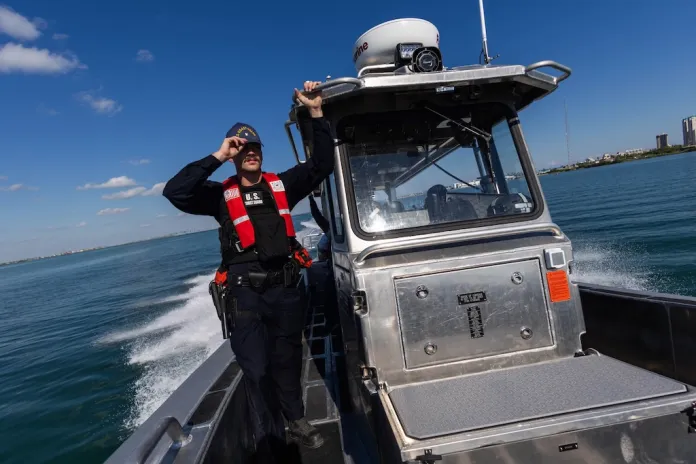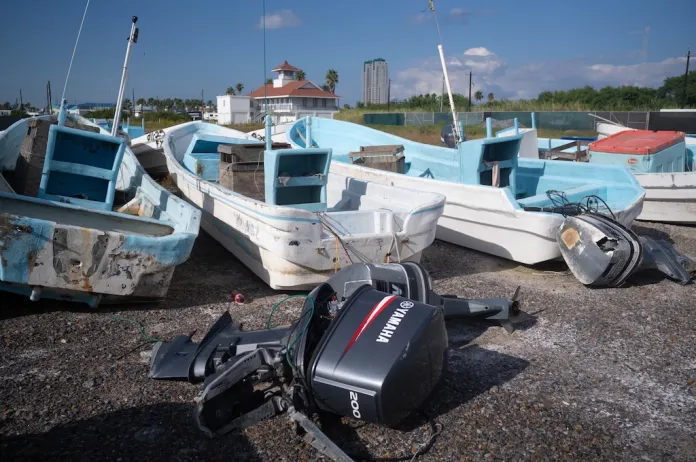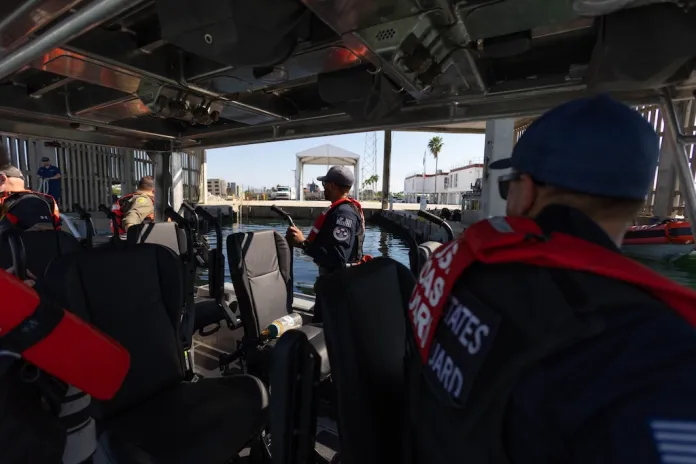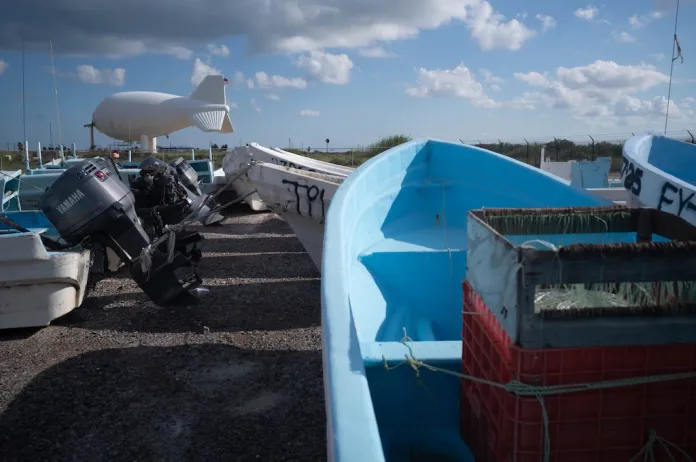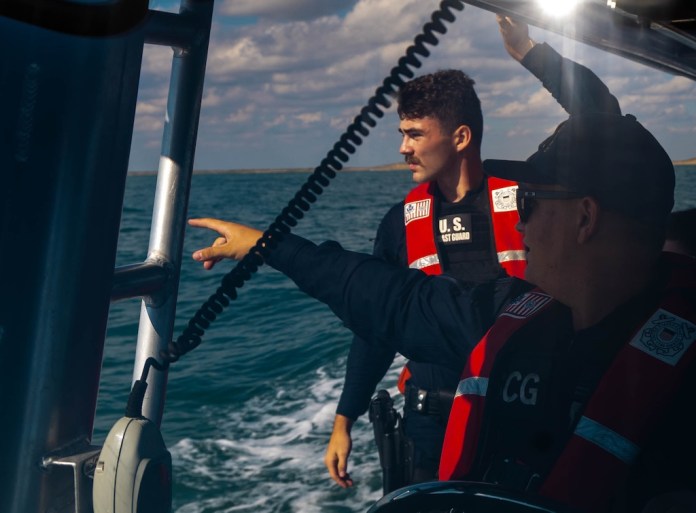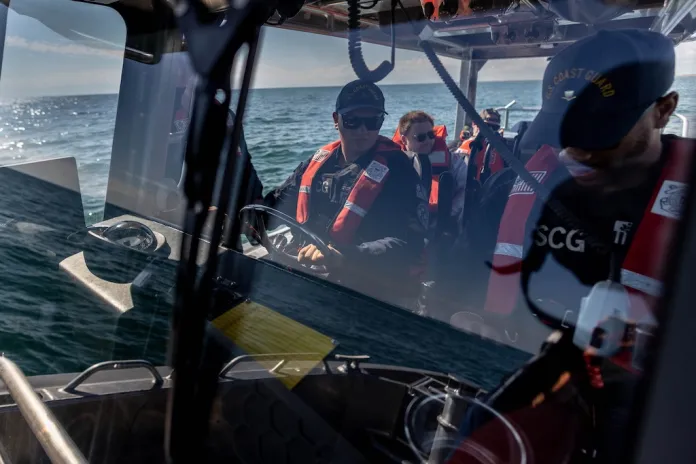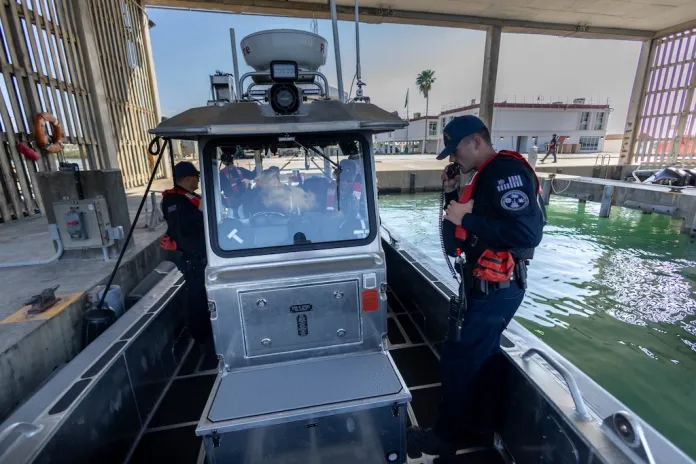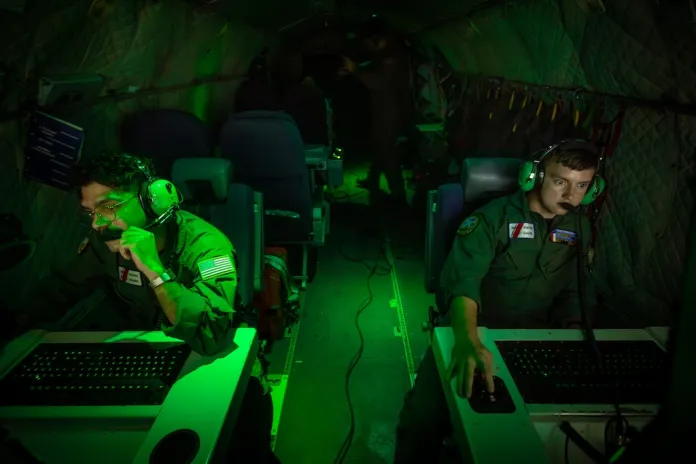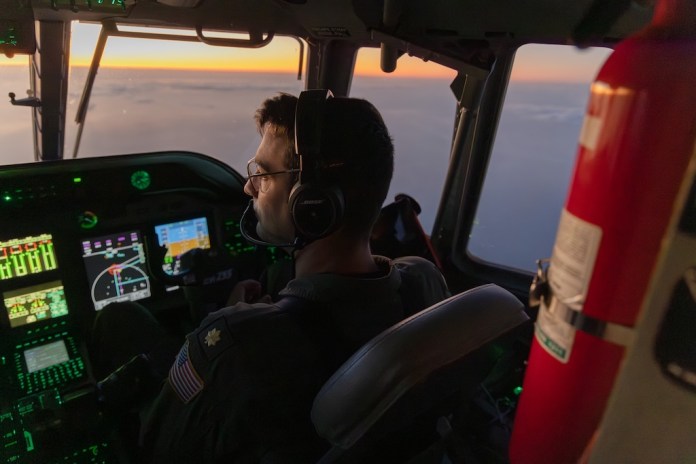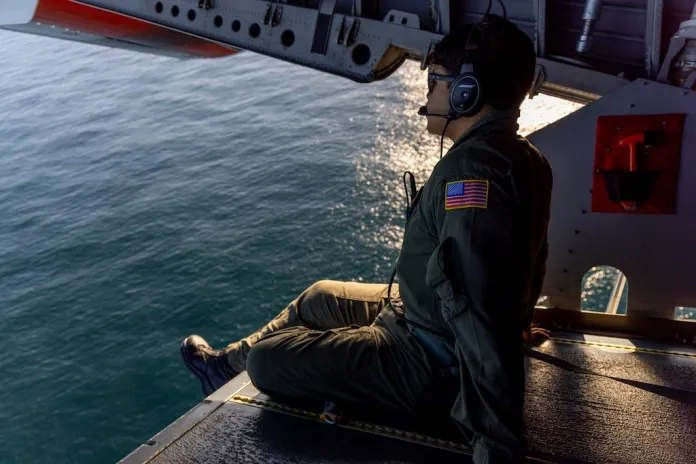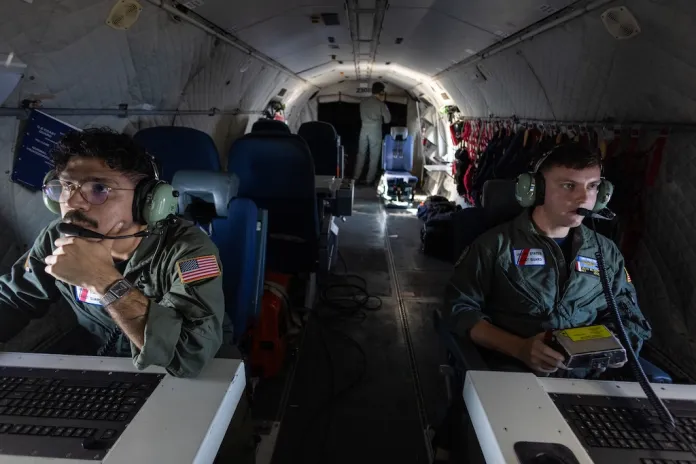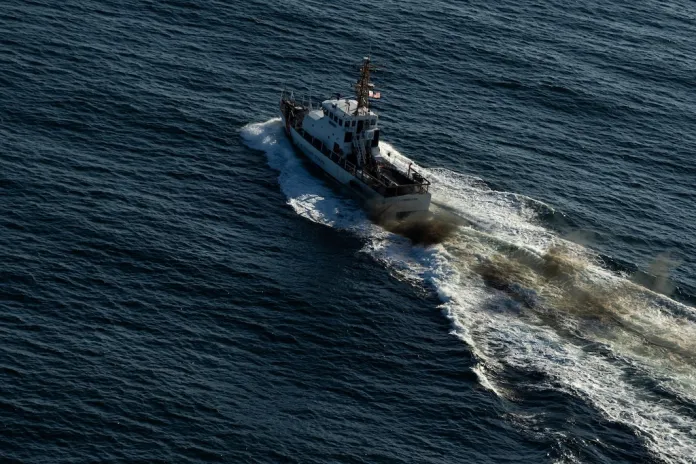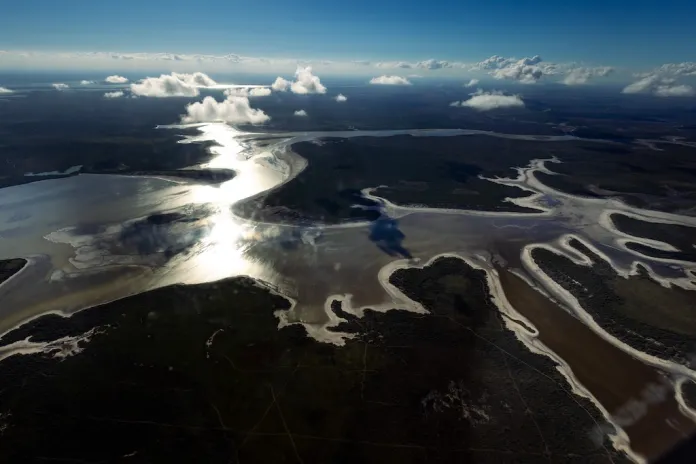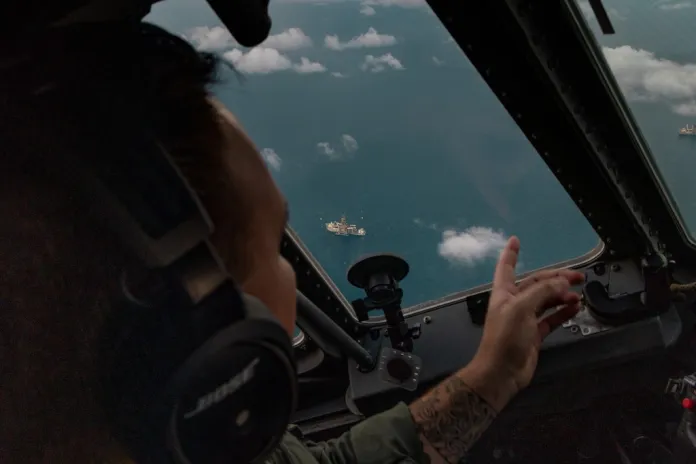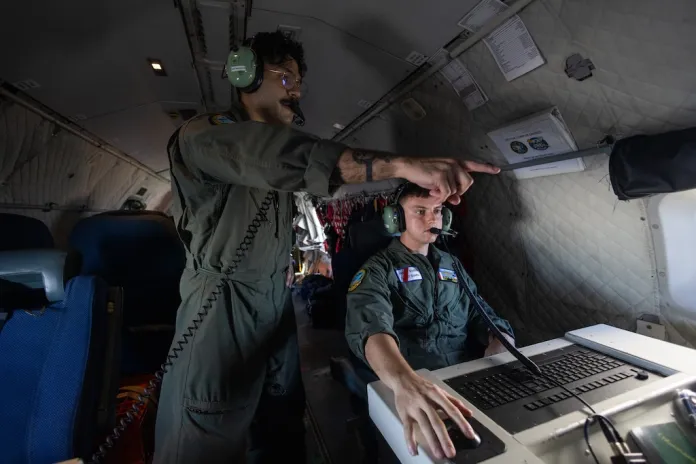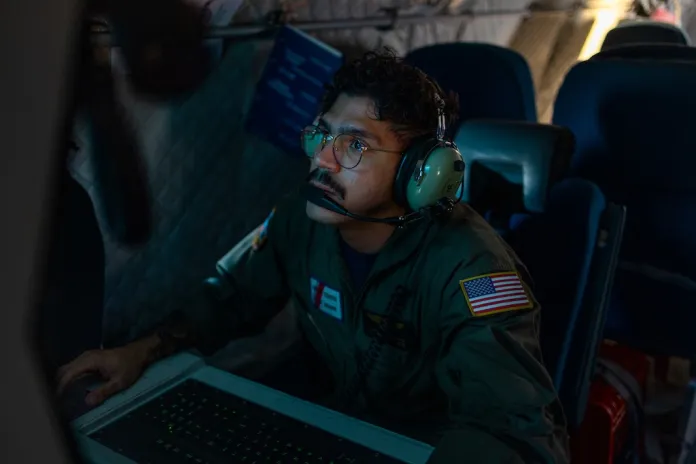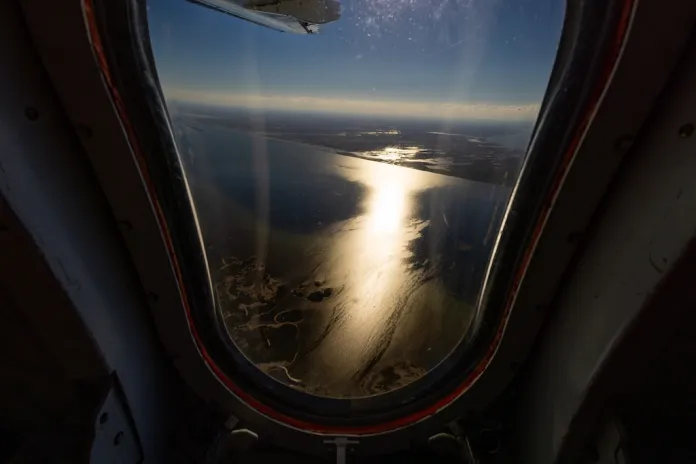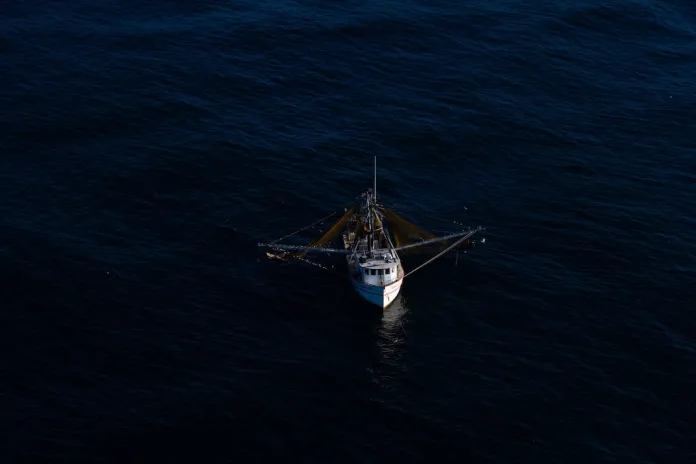In Focus delivers deeper coverage of the political, cultural, and ideological issues shaping America. Published daily by senior writers and experts, these in-depth pieces go beyond the headlines to give readers the full picture. You can find our full list of In Focus pieces here.
Illegal, unreported, and unregulated fishing endangers fisheries across the globe that contribute to economic growth, food systems, and ecosystems, and the Trump administration is trying to crack down on violations in the Gulf. The Washington Examiner traveled to the South Padre Island and Air Station Corpus Christi to ride along with the Coast Guard during a boat patrol tour and take a daily overflight tour of the Deep Gulf. Installment one of In too deep: Illegal fishing in the Gulf — and the Coast Guard’s action plan explores how Mexican fisherman evade U.S. restrictions. Installment two looks at how changes in Justice Department policy have led to greater enforcement of fishing restrictions. Installment three takes a wide look at the Coast Guard’s effort via land, air, and sea.
The U.S. Coast Guard and Customs and Border Protection Air and Marine Operations rely on an integrated effort involving air, land, and sea assets to carry out their mission of stopping illegal Mexican fishing in the U.S. part of the Gulf of America.
The commercial and recreational fishing industry in the Gulf is a multimillion-dollar business annually, and Mexican fishermen who overfish in their waters have fish in U.S. waters while trying not to get caught. In addition to siphoning a portion of the U.S. industry, the Mexican fishermen have ties to cartels, which get a cut of their profits.
The Washington Examiner traveled to U.S. Coast Guard Station South Padre Island and U.S. Coast Guard Air Station Corpus Christi to see firsthand how each component aids the overall mission.
By boat:
U.S. Coast Guard Station South Padre Island is located only about six miles north of the U.S.-Mexico border, along the coast, and is about a 50-mile drive from Playa Bagdad, the area where illegal fishermen depart from.
“Illegal, unreported, and unregulated (IUU) fishing and related harmful fishing practices are among the greatest threats to ocean health and are significant causes of global overfishing, contributing to the collapse or decline of fisheries that are critical to the economic growth, food systems, and ecosystems of numerous countries around the world,” a 2023 national security memorandum from the Biden administration said.
At the small Coast Guard outpost in Brownsville, Texas, there is a collection of an estimated 60 nearly identical 25-foot blue and white single-engine “lanchas” in what’s effectively a graveyard of seized vessels from illegal fishermen. Almost all of them have been seized since the start of the 2025 fiscal year, according to the dates written in spray paint on them.
The Washington Examiner accompanied a patrol mission, Special Purpose Craft – Law Enforcement II, with Coast Guard officials from South Padre Island last Thursday. The 36-foot vessel has a maximum speed of more than 60 knots per hour and a range of 250 nautical miles.
There are usually four guardsmen on a given patrol of the Gulf, and they most frequently interdict illegal fishermen at night.
Any time the Coast Guard or any other law enforcement agency identifies an illegal fishing vessel in U.S. waters, the guardsmen from South Padre Island could be the entity to carry out the physical interdiction. They often rely on others to help navigate toward the illegal fishermen, given the vastness of the Gulf and the difficulty of seeing the tiny vessels, especially at night.
The Coast Guard officers at South Padre Island have various vessels at their disposal, which they can utilize as needed, based on service requirements and availability.
Mexican fishermen’s use of lanchas is a double-edged sword for them. The boats are small and painted blue and white to help them avoid detection, although the U.S. also knows which types of vessels to focus on. Their vessels often blend into the water and are so low to the water that they sometimes are not detected by some U.S. radars and sensors.
The way a fishing vessel responds to incoming law enforcement also helps them determine whether they’re legal fishermen. In many instances, illegal fishermen attempt to make a dash for Mexican waters once they know that U.S. personnel are on their way. However, the Coast Guard has the authority to establish a doctrine called “hot pursuit,” which enables officers to pursue a vessel into Mexico’s Exclusive Economic Zone.
Once the Mexican fishermen are detained, they are brought aboard the Coast Guard’s vessel and essentially towed back to shore.
The lanchas are cheap to produce because the producers know there’s a risk that the Coast Guard could seize them.
By land:
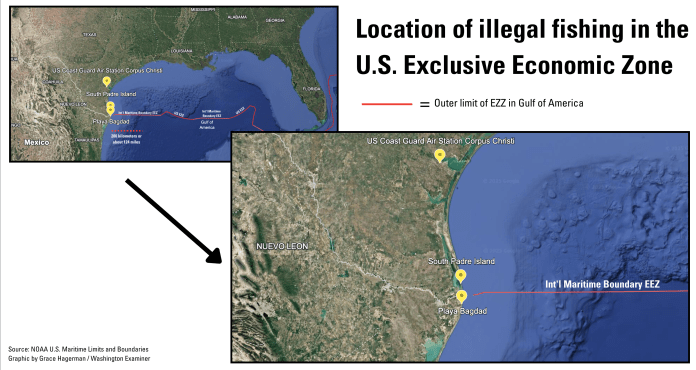
A short walk from the Coast Guard base at South Padre Island is a small Customs and Border Protection Air and Marine Operations post.
There, CBP agents handle the tethered Argos aerostat, a blimp attached to the ground via a wire that hovers several thousand feet above the ground. No one is stationed inside it, but it has cameras, radars, and different systems to identify ships, and its extended visibility has greatly benefited their efforts since it became operational in late 2022. When it’s in the sky, the Argos provides operators on the ground with a much further visual into the Gulf than is visible from the shoreline and a more consistent view than an overflight.
While the Argos is susceptible to bad weather and needs to be reeled in during it, the information it collects is relayed back to a nearby command center, where data from several other sensors is also tracked, and presents a comprehensive picture.
The implementation of the Argos “absolutely changed the dynamic in regards to illicit activity in our maritime border,” said Robert Theriot, assistant deputy director at the Argos outpost.
The Washington Examiner was given an inside look at the command center, which features several screens displaying all the data collected not only by the Argos but also by all the systems and sensors across the Gulf.
“It’s a layered approach unlike anything I’ve ever seen before in my 26-year career in Customs and Border Protection,” Theriot added. “So not only is it integrated, we’ve been able to stack the threat and we’ve been able to physically push things further out,” due to their increased visibility.
By air:
Another key component of the integrated effort to limit illegal fishing occurs out of the U.S. Coast Guard Air Station Corpus Christi, about three hours north of South Padre Island.
The Washington Examiner joined a crew on an overflight of the Gulf aboard an HC-144B fixed-wing aircraft, but the operators did not positively identify any Mexican fishermen in U.S. waters. Mexican fishermen frequently sail very close to the maritime boundary line because they overfish red snapper fish from their waters, which includes a cut for cartels.
The crew generally consists of five or six people — two pilots, two people to manage the Standardized Minotaur mission systems, which gives them access to the data collected by all the sensors and equipment, including the Argos, and a dropmaster, who would be in charge of deploying any equipment in the event of a search and rescue or aid operation.
The officers operating the Minotaur mission systems can track vessel movements and look for signs indicating whether the objects in the water that are sensed — sometimes it may not be a boat, but just a large wave or floating debris — are those of illegal fishermen.
If they can positively identify an illegal fishing vessel from the air, they will direct Coast Guard officers attempting to interdict the ship in the water from overhead.
All of these systems and people play a part in the overall effort to stop foreign fishermen from catching fish in U.S. waters. Officers from South Padre Island and Corpus Christi agreed that the number of interdictions they’ve conducted has been lower since four Mexican fishermen pled guilty to illegally fishing in U.S. waters in June, and the numbers back up their sentiment.
The Coast Guard at South Padre Island carried out 46 interdictions since the start of the 2024 calendar year, and only four of them have occurred since June 1, days before the fishermen’s guilty pleas were announced publicly.
It marked the first time that they charged the alleged perpetrators with possible jail time, instead of releasing them back into Mexico. In many prior instances, the Coast Guard would interdict the same Mexican fishermen multiple times, Lt. Ryan Sexton, commanding officer of U.S. Coast Guard Station South Padre Island, told the Washington Examiner.
The captain of the Mexican vessel, who pleaded guilty in June, was arrested 28 times prior. He was ultimately sentenced to serve 8 months in jail.
Sexton said seeing those fishermen get charged under the Lacey Act, which prohibits the trafficking of illegally acquired wildlife, fish, or plants, has improved the morale of his officers.

